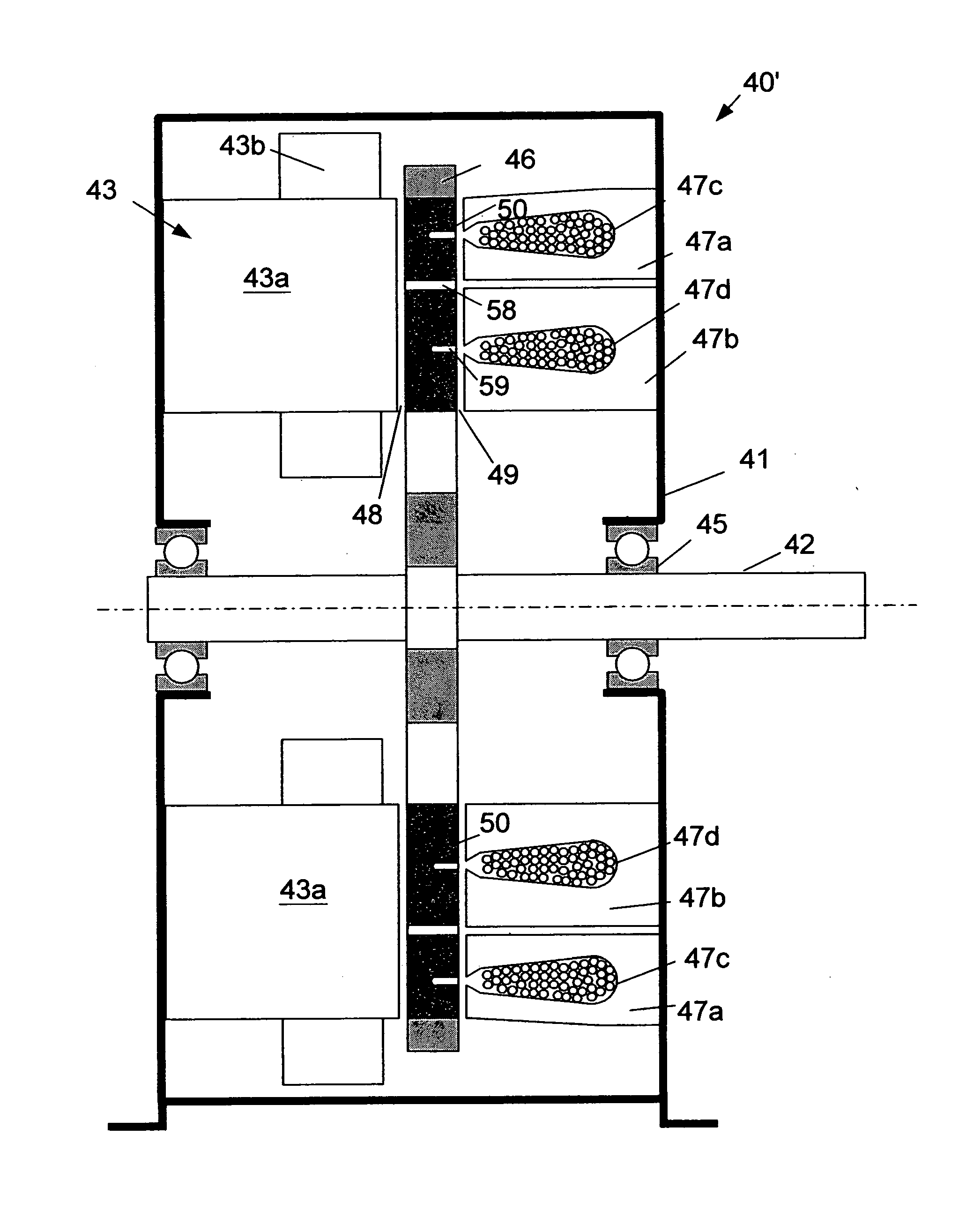Simplified hybrid-secondary uncluttered machine and method
a hybrid-secondary, uncluttered technology, applied in the direction of magnetic circuit rotating parts, magnetic circuit shape/form/construction, windings, etc., can solve the problems of high maintenance cost of motors with slip rings and brushes, high cost of adjustable speed drives fed by adjustable-frequency inverters, and discourage many potential users
- Summary
- Abstract
- Description
- Claims
- Application Information
AI Technical Summary
Benefits of technology
Problems solved by technology
Method used
Image
Examples
Embodiment Construction
[0032]FIG. 1 illustrates an assembly 10 of an induction motor 11 of the prior art that includes an uncluttered transformer 12 for providing a hybrid secondary. A stator core 13 of the motor 11 is wound with a polyphase winding 14. A rotor core 15 of the motor is wound with a two-phase winding 16. One or more conductors of cast aluminum can also be used on the rotor 15. To the left is a two-phase uncluttered rotating transformer 12. The stator 17 and stator coils 18 of this transformer do not connect to the stator winding 14 of the motor or to the rotor 19 of the transformer 12, but instead are magnetically coupled to the rotor of the transformer. The stator and the rotor of the transformer have coils that are peripherally disposed around the axis of rotation for the motor and the transformer. The electrical connection of the machine rotor to the transformer rotor allows only the slip energy to be present in the rotor of the transformer, and this slip energy is coupled to the stator ...
PUM
 Login to View More
Login to View More Abstract
Description
Claims
Application Information
 Login to View More
Login to View More - R&D
- Intellectual Property
- Life Sciences
- Materials
- Tech Scout
- Unparalleled Data Quality
- Higher Quality Content
- 60% Fewer Hallucinations
Browse by: Latest US Patents, China's latest patents, Technical Efficacy Thesaurus, Application Domain, Technology Topic, Popular Technical Reports.
© 2025 PatSnap. All rights reserved.Legal|Privacy policy|Modern Slavery Act Transparency Statement|Sitemap|About US| Contact US: help@patsnap.com



